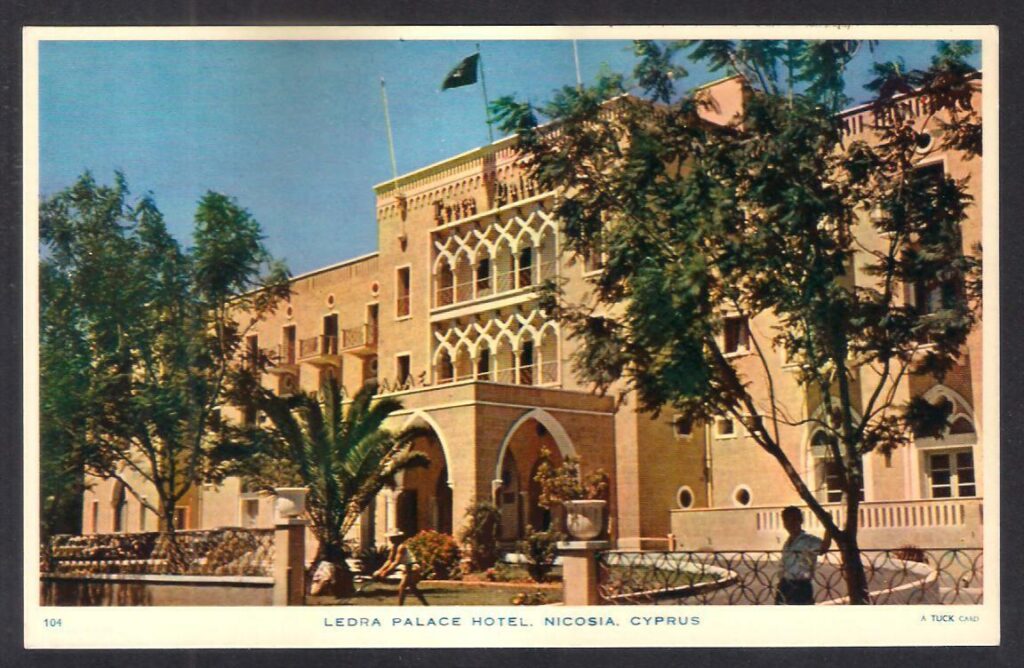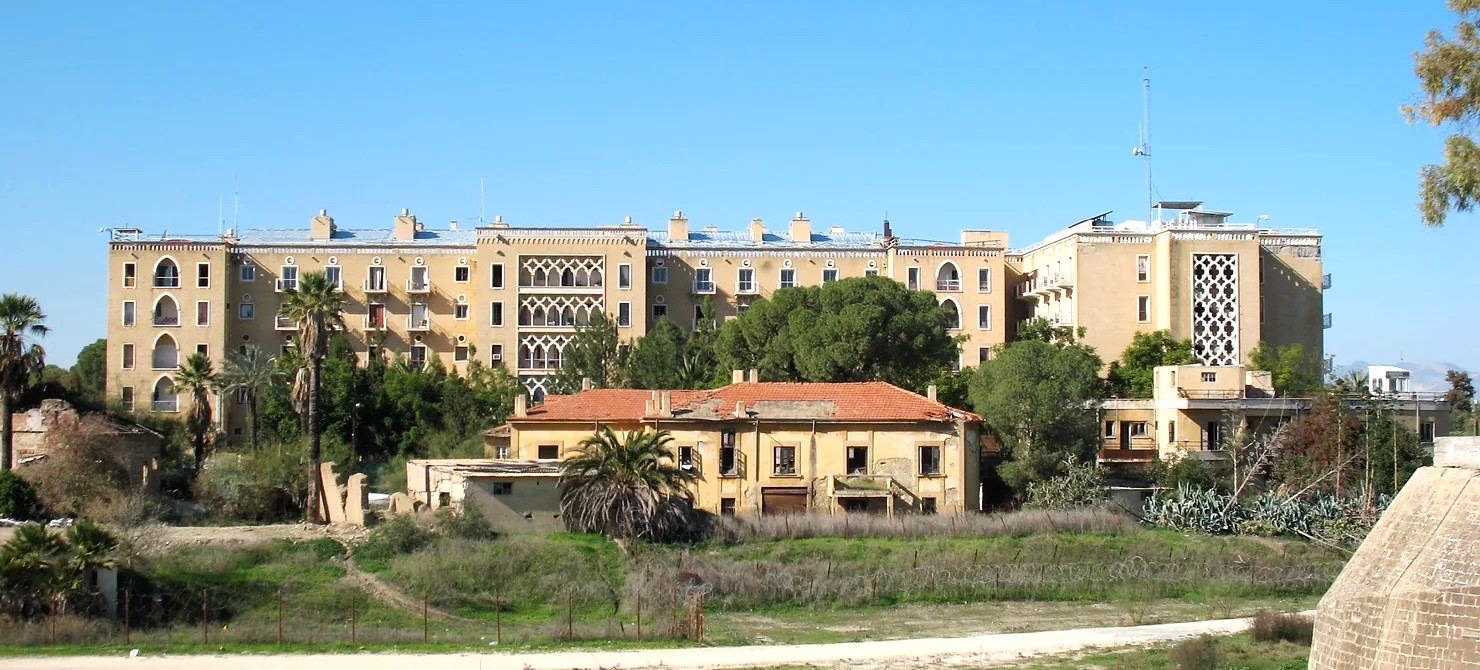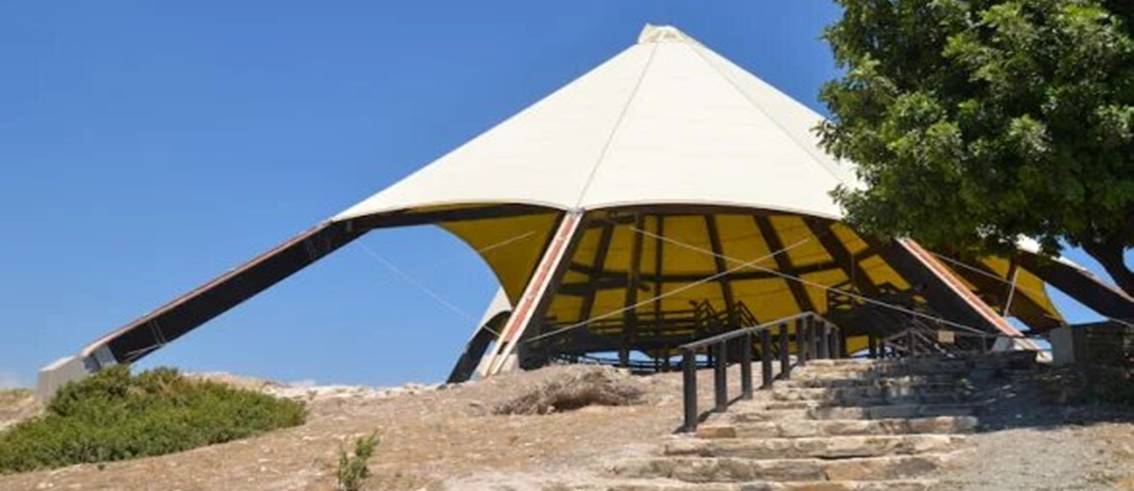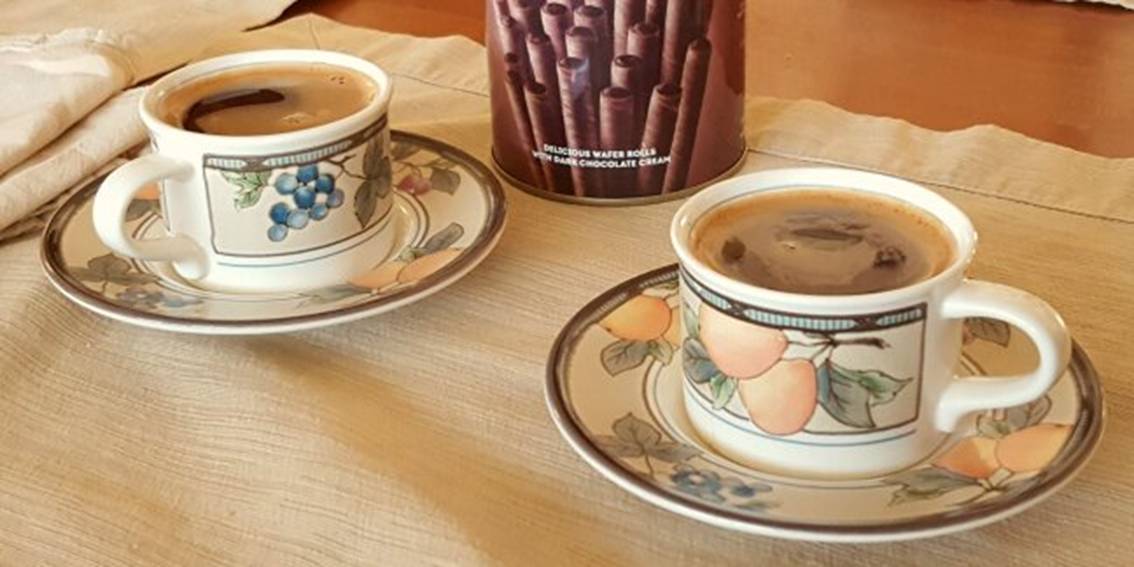The Ledra Palace Hotel in Nicosia, Cyprus
The Ledra Palace Hotel in Nicosia is a historic building. It reflects Cyprus’s turbulent 20th-century history. Built in the late 1940s as a luxury hotel, it now symbolizes division and serves as a centre for diplomatic negotiations. Over the years, the hotel has witnessed and played a role in key events that shaped Cyprus.
Early Years and Construction
The Ledra Palace Hotel was built between 1947 and 1949. At the time, Cyprus was under British colonial rule. The hotel was designed to be the most luxurious in the region. It featured 94 rooms, each with a private bathroom, which was rare at the time.
The architecture combined neoclassical and colonial styles. For example, it included grand staircases, spacious verandas, and ornate details. These elements captured the elegance of the era and made the hotel a standout landmark.
Social Hub of Nicosia
The hotel stood on what was then King Edward VII Street (now Markos Drakos Avenue). It quickly became the social hub of Nicosia. The Ledra Palace hosted lavish balls, receptions, and events. It was the preferred accommodation for dignitaries and celebrities. Guests included royalty, politicians, and film stars.
In addition to its luxurious appeal, the hotel symbolized Nicosia’s cosmopolitan aspirations in the mid-20th century. It represented a blend of elegance and modernity that defined the city during that period.
The Intercommunal Violence of the 1960s
Cyprus gained independence from Britain in 1960. However, tensions between Greek Cypriots and Turkish Cypriots quickly escalated. As a result, the Ledra Palace Hotel, located in central Nicosia, found itself in a strategic position during the unrest.
“Bloody Christmas” and the Hotel’s Role
The first major intercommunal clashes occurred in

1963-1964. This period is known as “Bloody Christmas.” During this time, the Ledra Palace Hotel served as a temporary refuge for civilians caught in the crossfire. It provided safety and shelter to those affected by the violence.
UN Involvement and Peacekeeping Efforts
In 1964, the United Nations established the UN Peacekeeping Force in Cyprus (UNFICYP). Its goal was to prevent further violence between the communities. Due to its central location, the Ledra Palace became a focal point for UN operations. The hotel frequently hosted peace talks and negotiations between the conflicting parties.
Moreover, the hotel’s role as a neutral ground helped facilitate dialogue during a tense period. It became a symbol of hope for peaceful resolution.
The Turkish Invasion of 1974 and the Division of Cyprus
The most dramatic chapter in the Ledra Palace Hotel’s history came in 1974. A coup by the Greek junta in Cyprus triggered a Turkish invasion. Consequently, the island was divided along the Green Line. Nicosia became the last divided capital in Europe. The Ledra Palace Hotel, located just inside the Greek Cypriot side of the Green Line, was taken over by the UN. It became a buffer zone headquarters.
The hotel’s once-opulent interiors were filled with sandbags, barbed wire, and military equipment. Its luxurious rooms became dormitories and offices for UN peacekeepers. As a result, the Ledra Palace became a stark symbol of the island’s division. It contrasted sharply with its former role as a beacon of hospitality and elegance.
The Ledra Palace in the Post-1974 Era
After 1974, the Ledra Palace Hotel no longer functioned as a traditional hotel. However, it remained significant in Cyprus’s political and social life. For instance, the hotel hosted numerous peace talks aimed at resolving the Cyprus conflict. It also served as a neutral meeting ground for bicommunal events. Greek and Turkish Cypriots could interact here under the watch of UN peacekeepers.
Additionally, the Ledra Palace crossing point, near the hotel, became one of the few places where people could cross between the Greek Cypriot south and the Turkish Cypriot north. This was true even during the heavily militarized years.
Preservation and Legacy
Today, the Ledra Palace Hotel is not operational as a hotel. It remains under UN control. The building is preserved as a historical monument. It still houses UN peacekeeping personnel. Its faded grandeur serves as a poignant reminder of Cyprus’s divided past. Furthermore, it highlights the ongoing challenges of reunification.
The Ledra Palace Hotel is more than just a building. It symbolizes Cyprus’s complex history. For example, it reflects the island’s journey from colonial rule to independence. It also represents the intercommunal conflict and the unresolved division. Its walls, once filled with luxury and celebration, now stand as silent witnesses to the enduring hope for peace and unity in Cyprus.
In conclusion, the Ledra Palace Hotel remains a powerful symbol of Cyprus’s past and present. It continues to inspire hope for a future where peace and unity prevail.
You May Also Like This
The Story of Berengaria Hotel in Prodromos Village: https://anatolikilemesou.com/?p=4303




